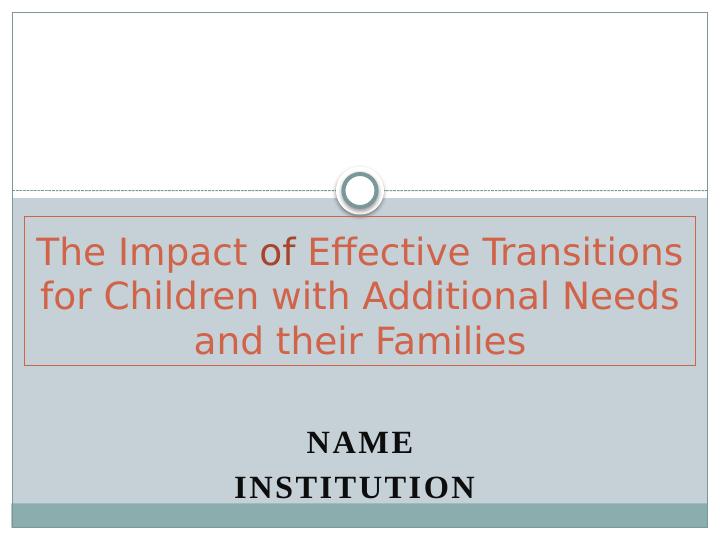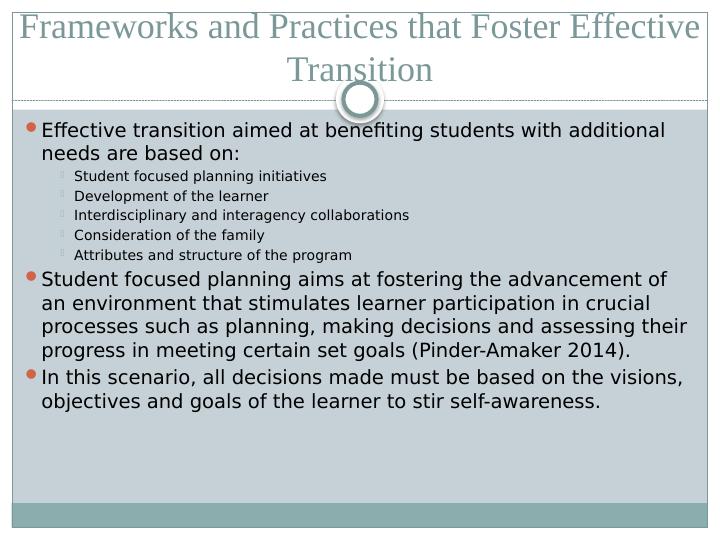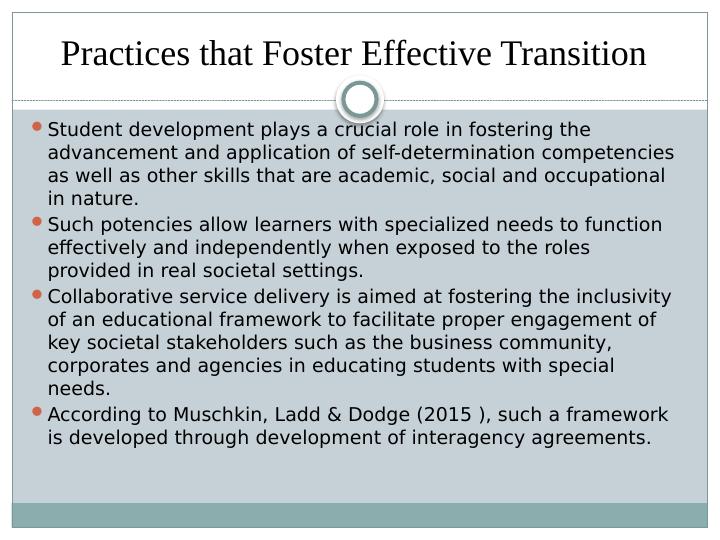The Impact of Effective Transitions for Children with Additional Needs and their Families
12 Pages1246 Words231 Views
Added on 2023-06-03
About This Document
This presentation discusses the challenges faced by children with additional educational needs when undertaking transitions at school. It explores frameworks and practices that foster effective transition, factors affecting successful transition, and recommendations for educational institutions dealing with children with special needs. The presentation includes references to relevant research studies.
The Impact of Effective Transitions for Children with Additional Needs and their Families
Added on 2023-06-03
ShareRelated Documents
End of preview
Want to access all the pages? Upload your documents or become a member.
(PDF) Understanding School Transition
|5
|459
|33
Reflection upon the Moments of Learning
|6
|1417
|394
Special Education Needs and Disabilities
|14
|3387
|434
Sociological Understanding for Improving Education in Australia
|15
|4212
|92
Historical, Political, and Curricular Rationales for Inclusive Education
|4
|1745
|78
Pedagogy Continuity Among Children: An Annotated Bibliography
|6
|1951
|256




